Occitanie encompasses an architectural and natural heritage that reflects many centuries of history. Medieval villages are nestled in valleys and on heights, while castles and monasteries tell of the era of the Cathars and religious orders. The region also features remarkable geological formations: deep gorges, waterfalls, potholes, and caves decorated with prehistoric paintings. Among the sites to visit, Saint-Cirq-Lapopie overlooks the Lot Valley with its stone houses and narrow streets. The Peyrepertuse fortress stands at 800 meters above sea level on a rocky spur in the Corbières. The Navacelles cirque reveals a canyon carved by the Vis River, while the Gorges de la Jonte provide trails through a habitat for vultures. The Lagrasse Abbey maintains its medieval architecture on the banks of the Orbieu, and the Niaux Cave houses Magdalenian paintings dating back 14,000 years. Natural curiosities like the Gouffre de l'Oeil Doux and the intermittent Fountain of Fontestorbes complete this territory where history and geology meet.
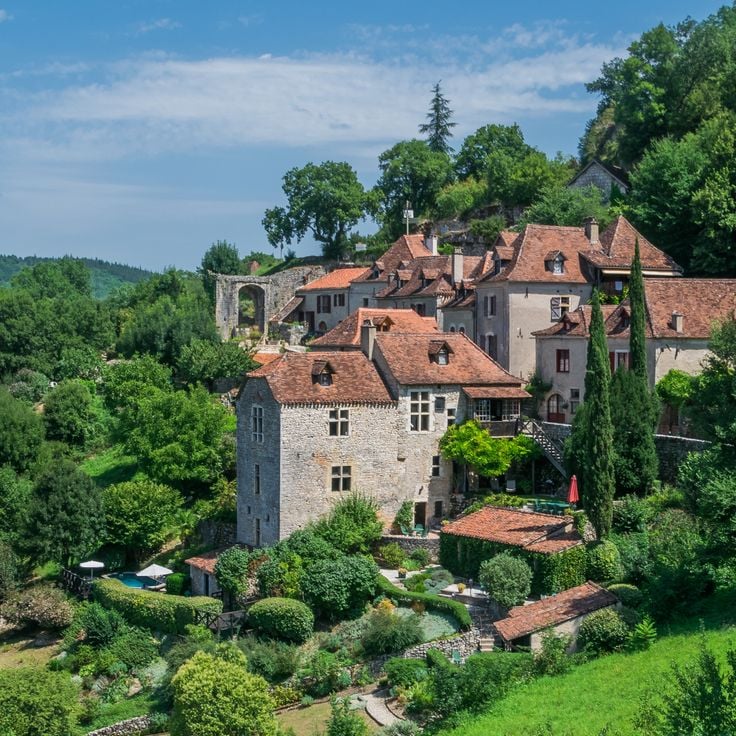
Lot, France
Saint-Cirq-Lapopie stands one hundred meters above the Lot River. The village preserves its medieval architecture from the 13th century, with stone houses, narrow streets and fortified gates. The location provides wide views over the river valley.
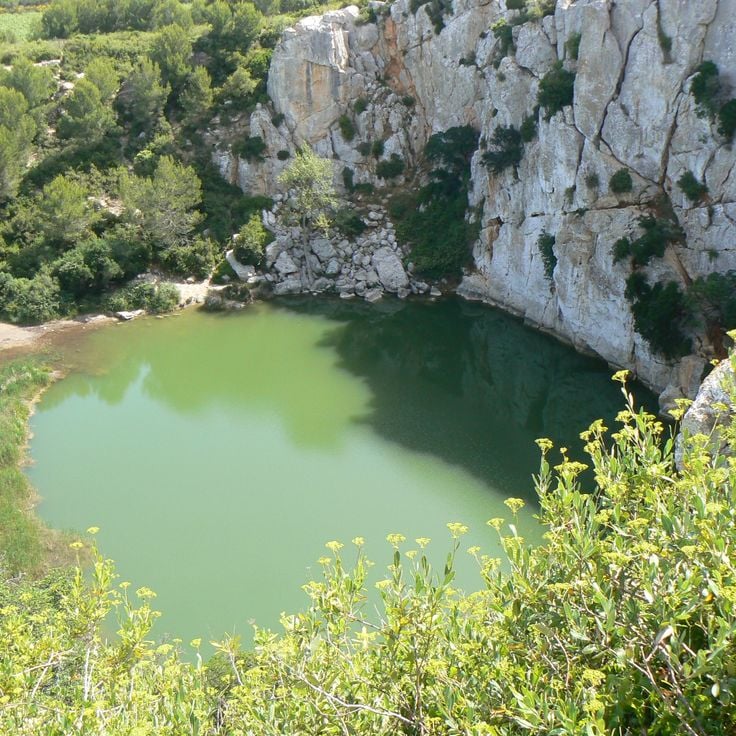
Aude, France
The Gouffre de l'Oeil Doux is a 20-meter deep natural pool formed in limestone rock within the vineyards of the Massif de la Clape. The water displays green hues due to mineral composition and reflection from Mediterranean vegetation growing on the surrounding rock walls.
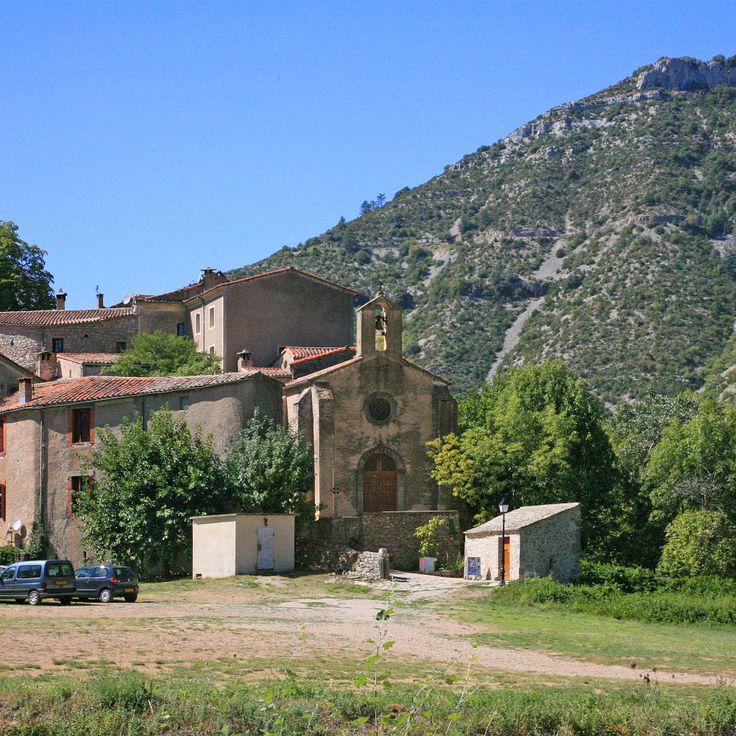
Hérault, France
The Cirque de Navacelles is a natural canyon that reaches 300 meters in depth, carved over millions of years by the Vis river through the limestone plateau. Several viewpoints allow visitors to observe the geological formations and the meandering river course.
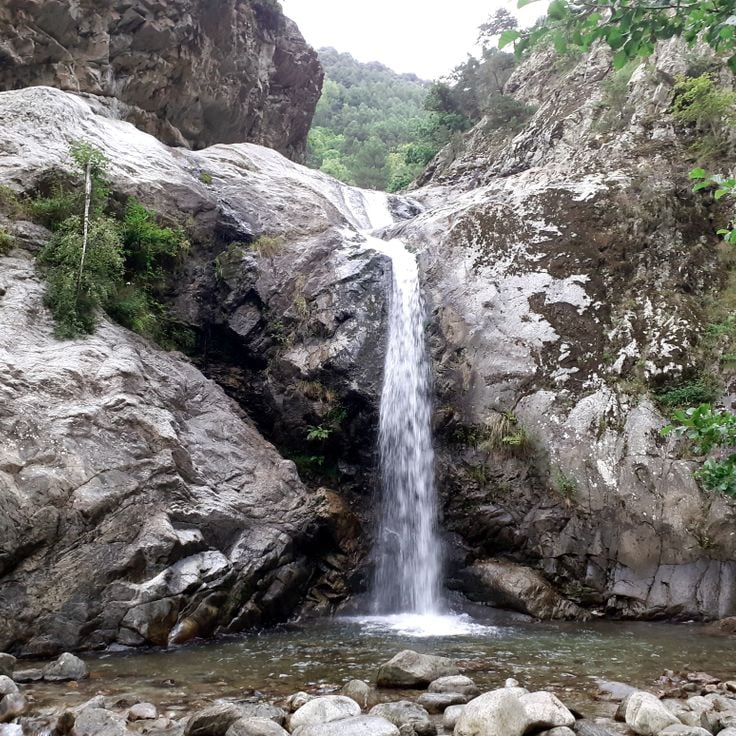
Ariège, France
The Cascade des Anglais comprises multiple waterfalls that flow down rock formations in the Ariège mountains. Natural pools form between the cascading levels, suitable for swimming. Marked hiking trails lead through the forested surroundings to the different waterfalls and provide access to the bathing areas.
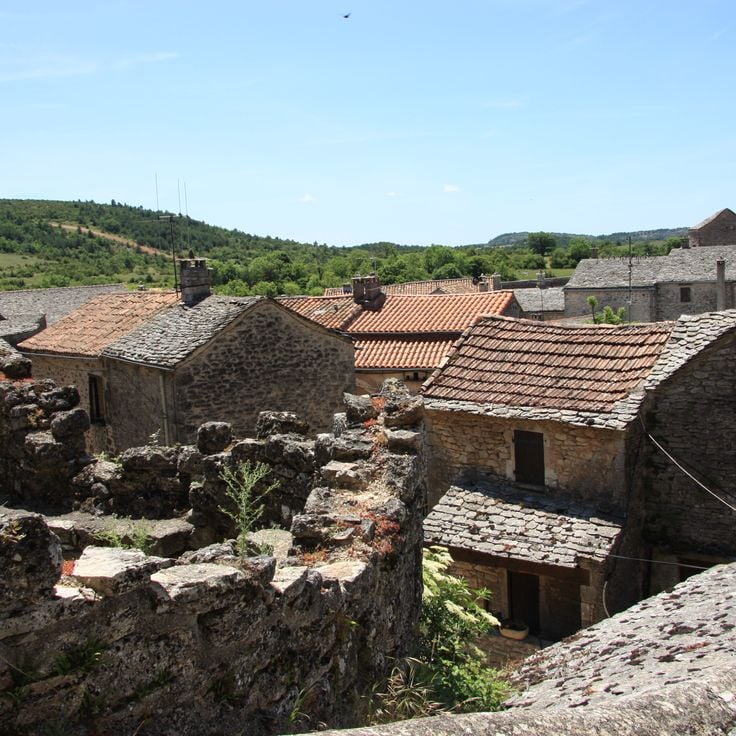
Aveyron, France
La Couvertoirade is a medieval village on the Larzac plateau, founded by the Templars in the 12th century. The village preserves its complete 15th-century defensive walls with five towers and two fortified gates. The Templars built a castle and a church here, both still visible today. Stone houses from the medieval period line the cobbled streets.

Lozère, France
These limestone gorges between the Causses extend over several kilometres and offer numerous hiking trails along the rock walls. The high cliffs serve as nesting sites for griffon vultures, black vultures and other birds of prey, which live here in one of the most important colonies in France.
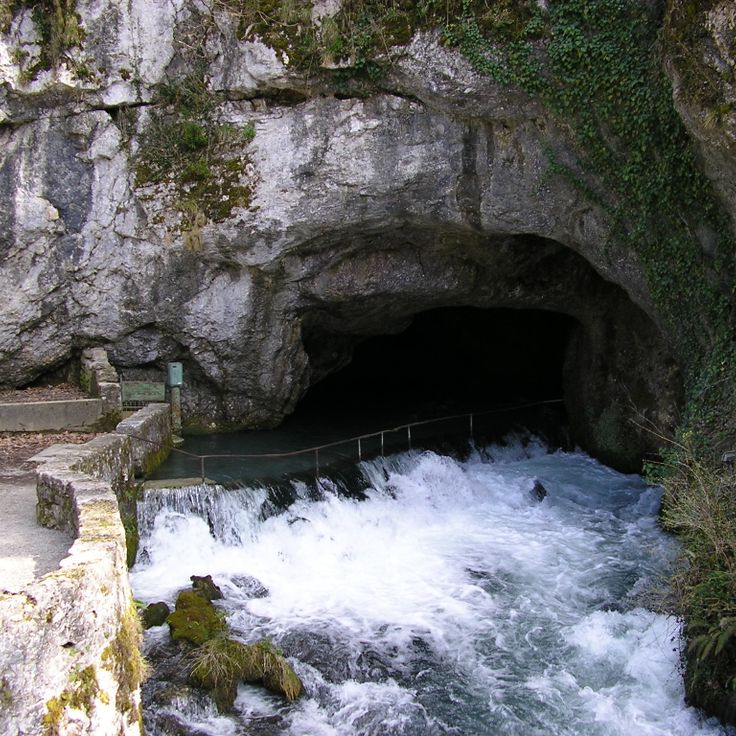
Ariège, France
The Fontaine de Fontestorbes is a natural spring in the Ariège department that follows an intermittent cycle of approximately 30 minutes. Water emerges from the rock, with the flow rate periodically increasing and decreasing. This hydrogeological phenomenon is caused by the configuration of underground cavities that function as a natural siphon, regulating the rhythm of water discharge.
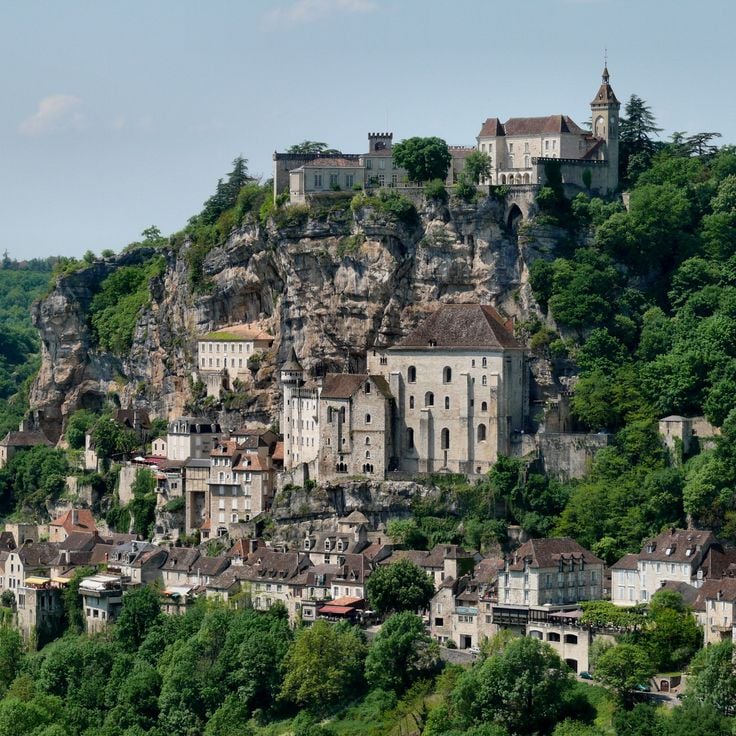
Lot, France
Rocamadour extends across several terraces on a limestone cliff above the Alzou valley. The town's seven medieval churches are distributed across different levels, connected by staircases and pathways. The Basilica of Saint-Sauveur and the Chapel of Notre-Dame are among the most significant religious buildings in this vertical settlement.
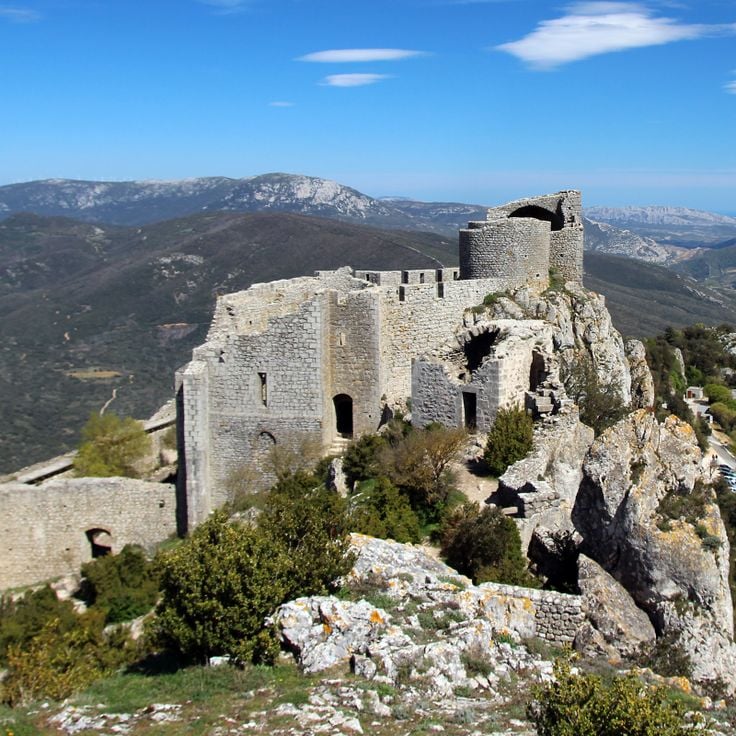
Aude, France
Peyrepertuse Castle rises on an 800-meter limestone ridge and dominates the Corbières valley. This medieval fortress extends across several terraces and comprises two fortified sections protected by walls and towers. The monument was part of the French border defenses following the Treaty of Corbeil in 1258.
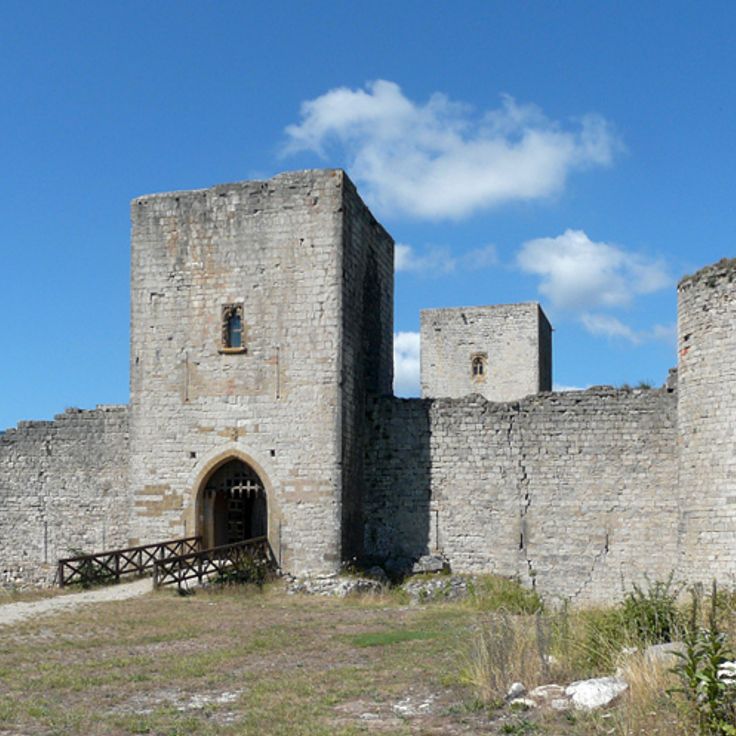
Aude, France
The Château de Puivert is a 13th-century fortress that rises above the Quercorb valley. This former feudal castle preserves several halls, including the Musicians' Hall, decorated with Romanesque sculptures depicting medieval instrumentalists. The site documents the courtly life of the period.
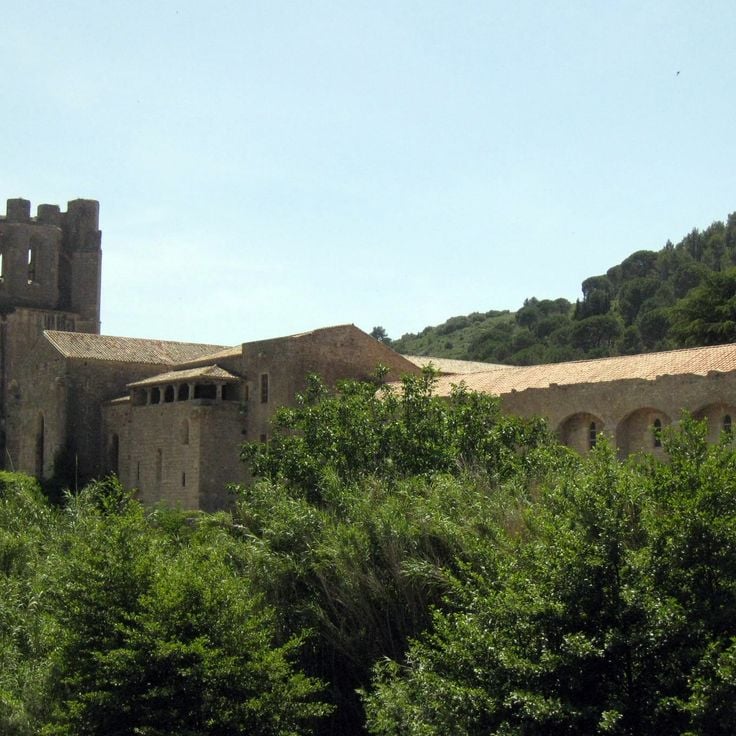
Aude, France
Sainte-Marie de Lagrasse Abbey was founded in the 8th century by Charlemagne and developed into a major Benedictine monastery. The complex includes an 11th-century Romanesque church, a 13th-century Gothic cloister, a bell tower, and abbey buildings from various periods up to the 18th century. The site is located on the banks of the Orbieu River in the medieval village of Lagrasse.
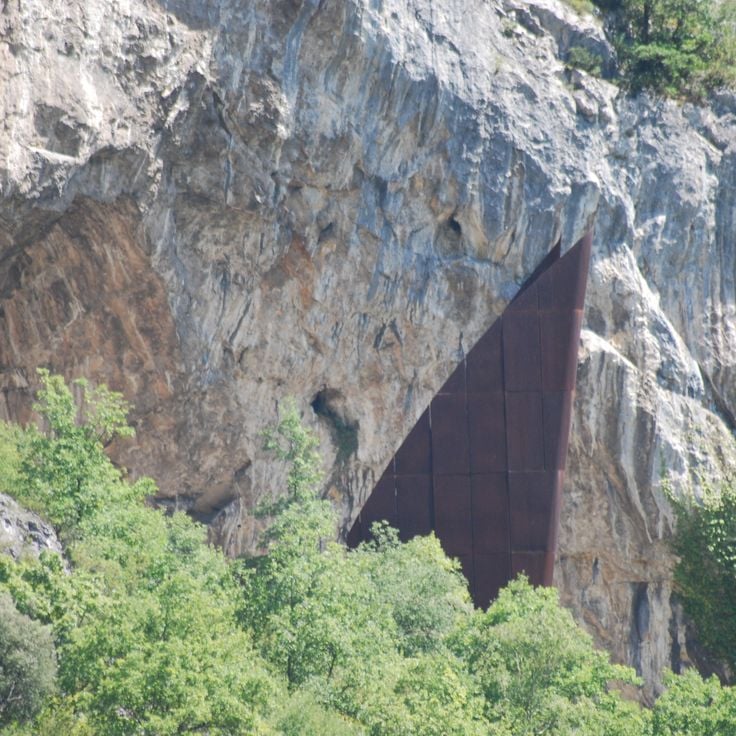
Ariège, France
Niaux Cave houses prehistoric wall paintings from the Magdalenian culture, created approximately 14000 years ago. These Paleolithic representations primarily show bison and horses, drawn on the rock walls using charcoal and mineral pigments. The Salon Noir, the main chamber containing the paintings, is located about 800 meters from the entrance and can only be visited through guided tours.
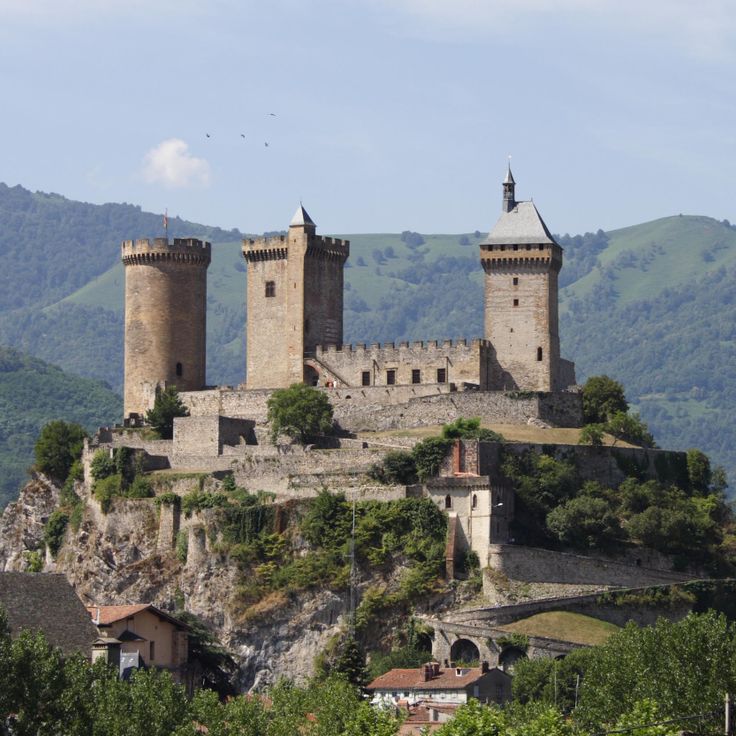
Ariège, France
The Château de Foix is a 10th-century fortress built on a limestone rock overlooking the town. The castle served as the seat of the Counts of Foix and played an important role in the history of Languedoc. Today, the Château houses a museum documenting the medieval history of the region and military architecture.
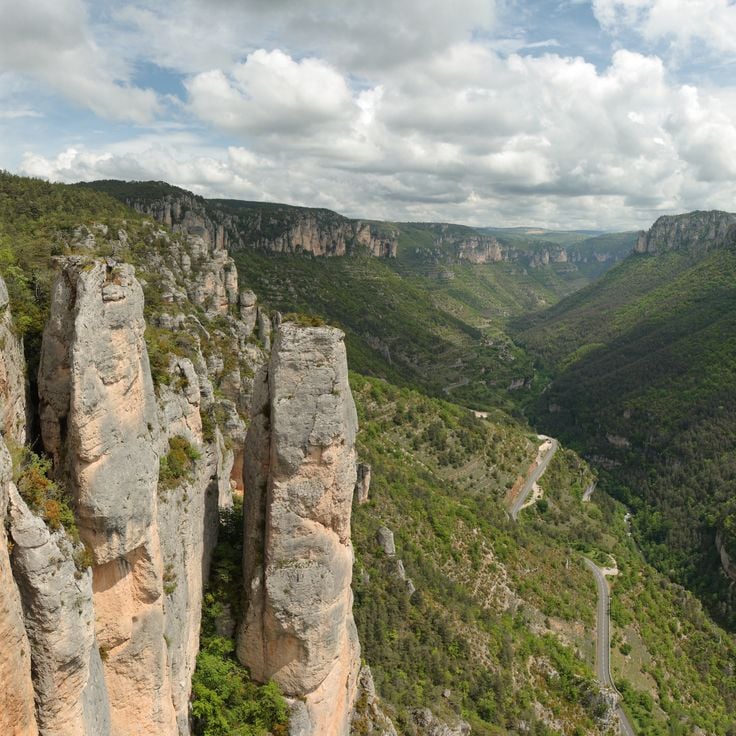
Lozère, France
The Balconies of Vertigo are located at 800 meters altitude and offer direct views over the canyon and limestone formations of Grands Causses Natural Park. These observation platforms provide access to the gorges of Lozère and the geological structures of the Causses plateau.

Hérault, France
Saint-Guilhem-le-Désert is a medieval village in the Hérault valley, known for its 11th-century Abbey of Gellone. The Romanesque church preserves relics of Saint William of Aquitaine. Stone houses built from ochre limestone line narrow streets that lead to the village square with its fountain. The village sits on the Way of Saint James and borders the Hérault gorges.
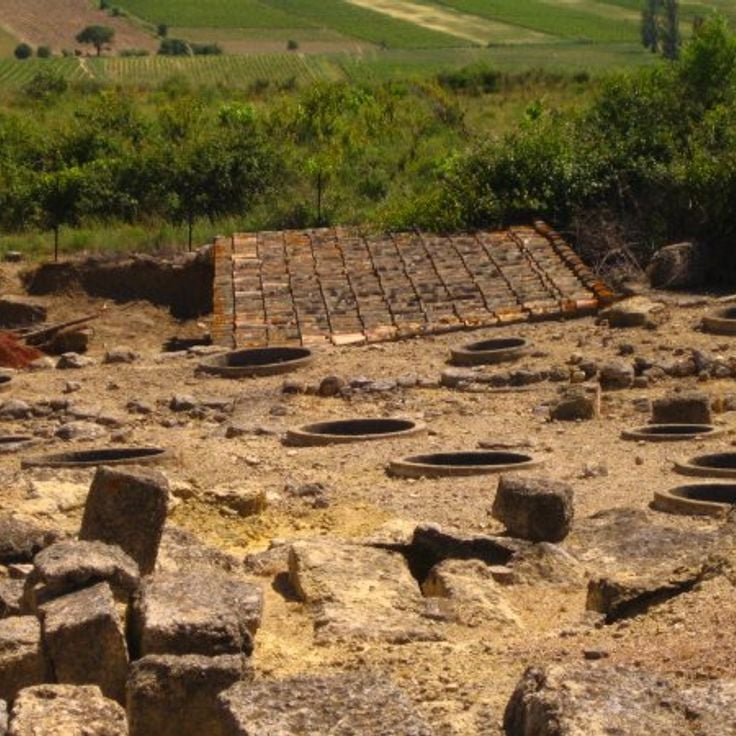
Hérault, France
The Oppidum d'Ensérune is an archaeological site located on a hill, preserving remains of a Gallo-Roman settlement dating from the 6th century BC to the 1st century AD. Excavations have revealed residential quarters, streets, a silo and fortifications. The associated museum displays pottery, tools, jewelry and other artifacts recovered from the region.
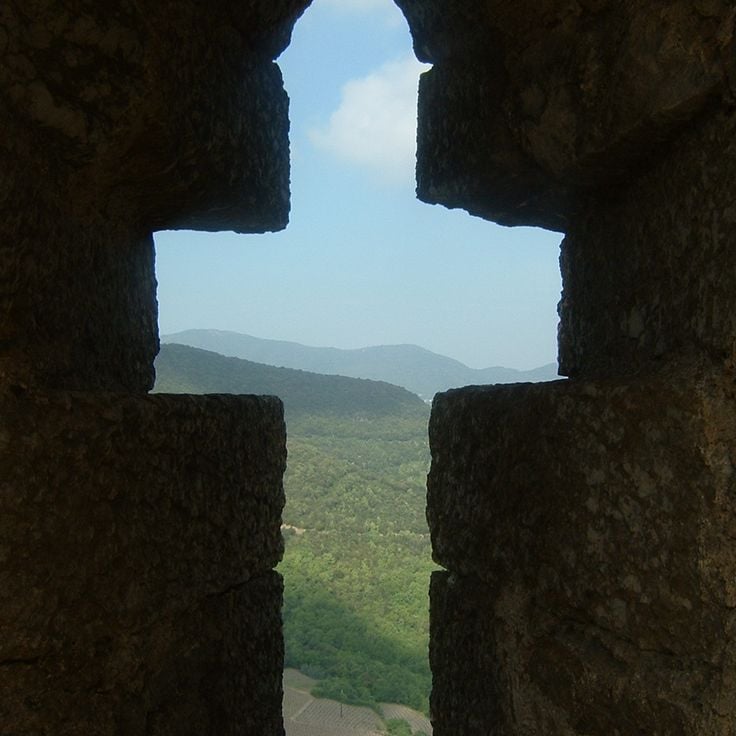
Aude, France
The Château de Termes is a 13th century medieval fortress built on a limestone outcrop. This castle was one of the most important defensive structures of the Cathars during the Albigensian Crusade and fell after a siege lasting several months in 1210. The ruins cover approximately one hectare and display remains of defensive towers, walls and cisterns.
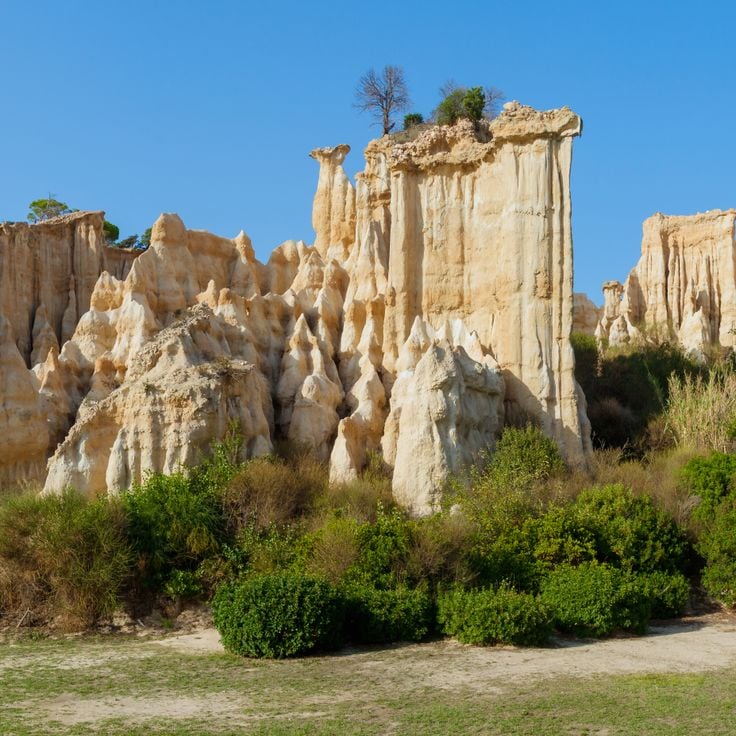
Ille-sur-Têt, France
Les Orgues d'Ille-sur-Têt are geological formations of sandstone created by erosion over several million years. These rock spires reach heights of up to twelve meters and form a labyrinth of columns, towers and crevices. The site extends over approximately four hectares and clearly demonstrates the effects of wind and rain on sedimentary rock. The ochre and reddish tones of the formations change according to the time of day and light conditions.
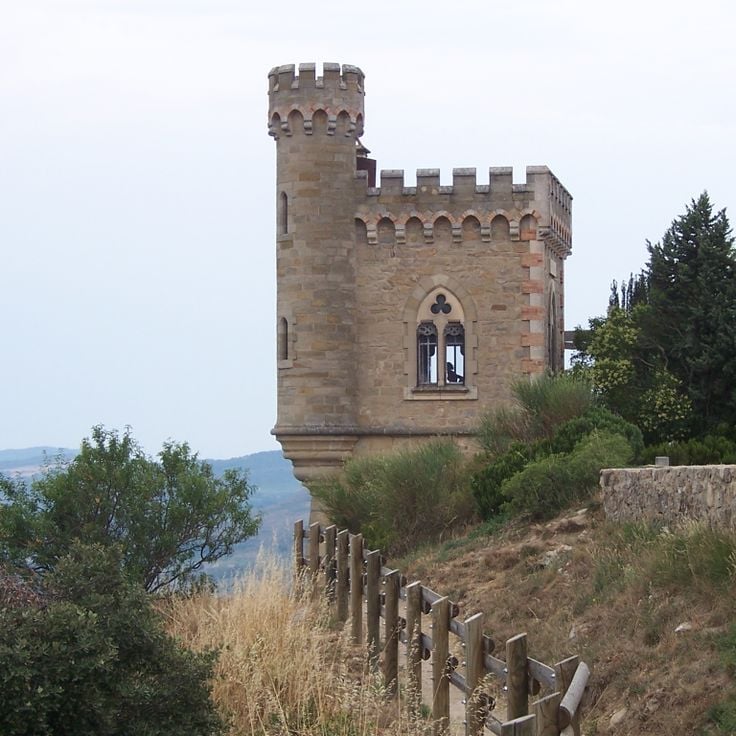
Aude, France
Rennes-le-Château is a village at 470 meters altitude in the Aude department. The Church of Sainte-Marie-Madeleine was restored in the 19th century by priest Bérenger Saunière and displays unusual decorations and symbols. The Tour Magdala, a lookout tower from the late 19th century, offers views over the surrounding hills and valleys. The village became known through theories about hidden treasures and secrets.
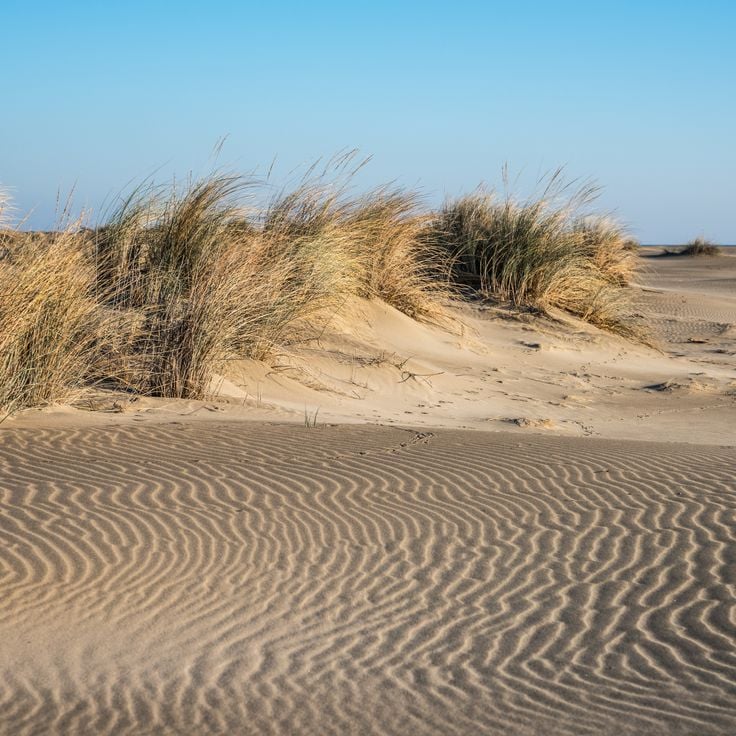
Gard, France
Espiguette Beach extends for 10 kilometers along the Mediterranean coast, offering fine sand and natural dune landscapes. The lighthouse, constructed in 1869, stands at the southern end of the beach and serves as a navigation point for maritime traffic. This coastal area is part of the Petite Camargue nature reserve and hosts typical vegetation including marram grass and sea holly.
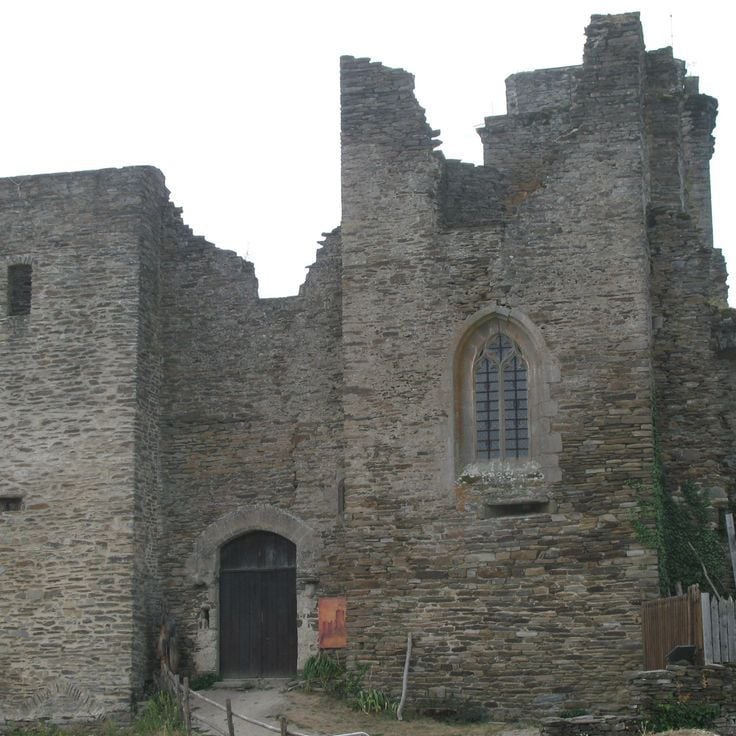
Aveyron, France
The Château de Valon dates from the 12th century and stands on a rocky outcrop overlooking the Truyère valley. The elevated position of this medieval fortress offers wide views over the Aveyron landscape and surrounding valleys.
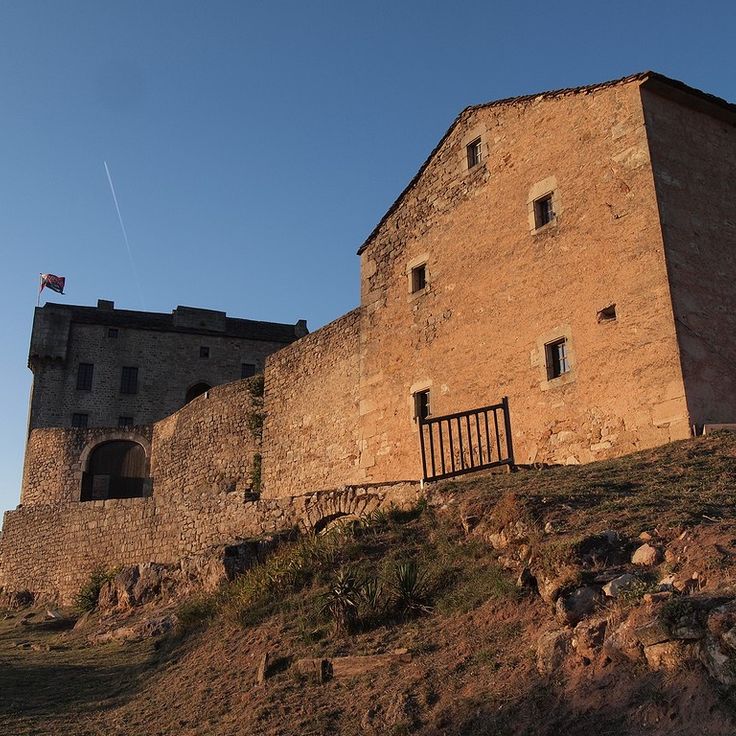
Aveyron, France
This medieval fortress stands above the Alagnon valley. After restoration, tours present the castle's history and architecture.

Hérault, France
Olargues is a village of medieval origin in Hérault, characterized by its stone houses from past centuries and its narrow cobbled streets. The Pont du Diable, an old stone bridge, spans the Jaur river and connects both banks. The church and bell tower define the profile of Olargues.
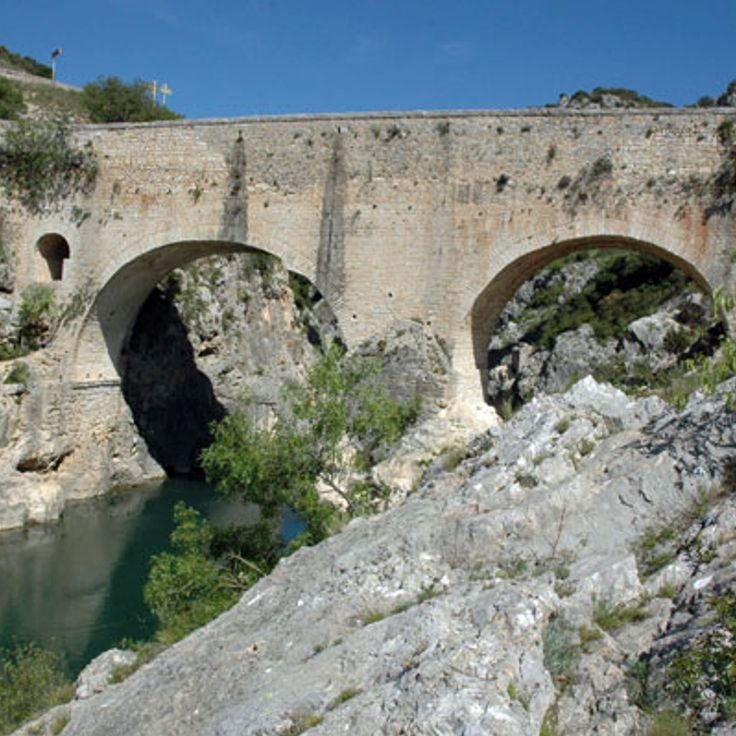
Hérault, France
The Pont du Diable is a Romanesque stone bridge from the 11th century, rising 20 meters above the Hérault river. This medieval construction connects the municipalities of Saint-Jean-de-Fos and Aniane and served for centuries as an important trade route between the villages of the region.

Hérault, France
Saint-Gervais-sur-Mare Abbey was built in the 12th century and is located in the Hérault mountains. This religious building displays characteristic elements of Romanesque architecture with massive stone walls, a simple portal and a square bell tower. The church originally belonged to a Benedictine monastery and served as a pilgrimage stop on the route to Santiago de Compostela.
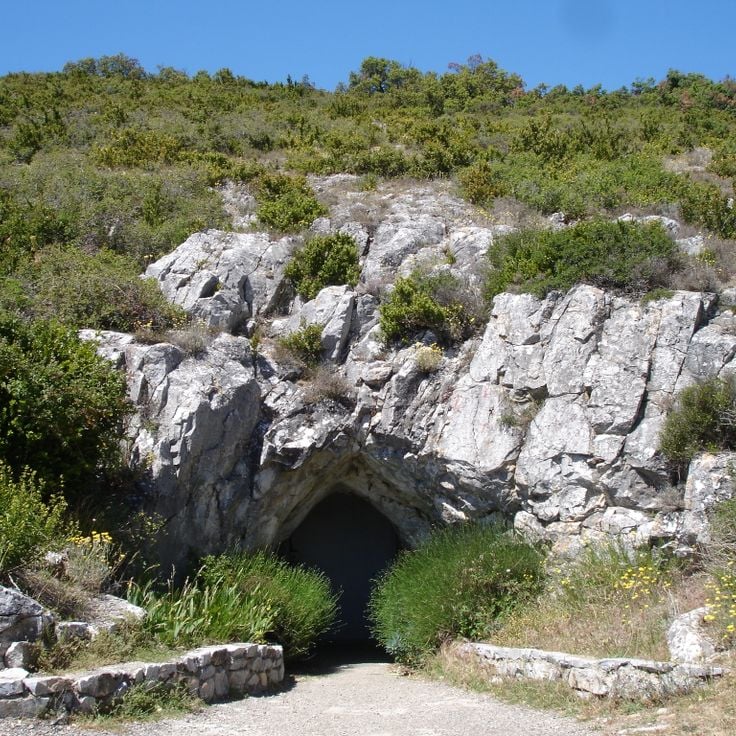
Aude, France
The Grotte de Limousis extends across multiple levels and presents numerous stalactites and stalagmites. It contains an underground chamber with aragonite crystals that formed over thousands of years. The visit leads through various galleries where geological formations document the development of this karst cave.

Aude, France
The Gorges de Galamus were shaped by the erosive force of the Agly River, which carved a gorge approximately 500 meters deep into the limestone. This natural formation connects the Fenouillèdes region with Roussillon. A road carved into the rock face allows passage through the gorges. A hermitage dating from the 7th century, dedicated to Saint Anthony of Padua, clings to the rock wall.
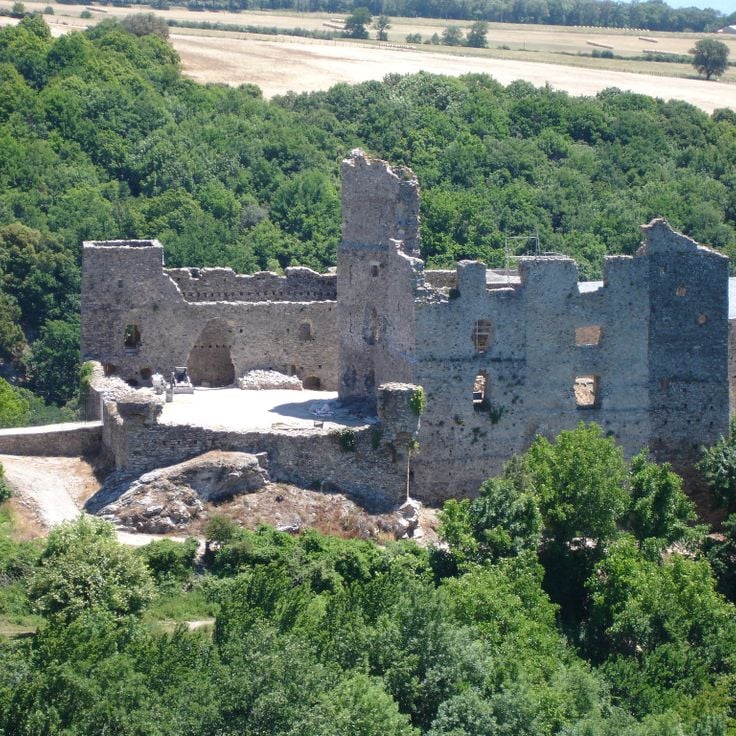
Aude, France
Saissac Castle rises on a hill and presents architectural elements from different periods between the 10th and 16th centuries. The complex includes a square keep, residential buildings and fortification walls. A museum within the premises documents the history of coin minting in the region with tools and numismatic collections.
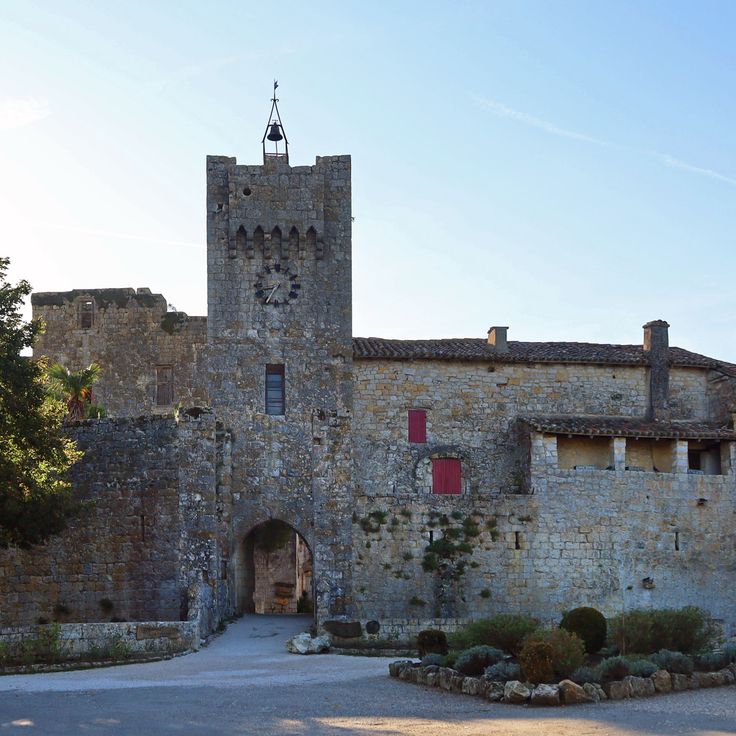
Gers, France
Larressingle is a fortified village from the thirteenth century that contains stone houses, ramparts and a castle within its circular walls of one hundred meters diameter.
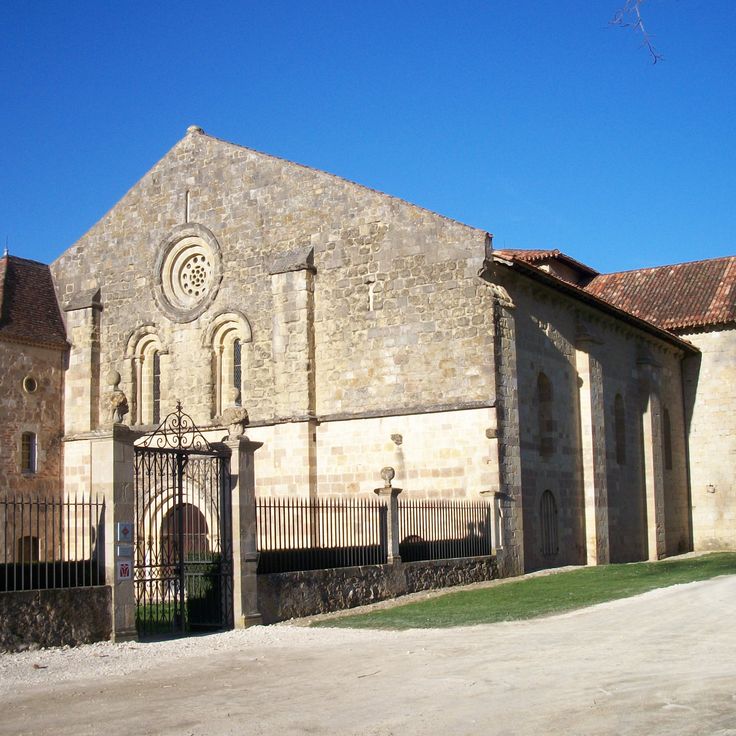
Gers, France
Flaran Abbey is a Cistercian monastery founded in 1151 in Gers. The building displays Romanesque architecture with Gothic elements. The abbey houses permanent exhibitions of paintings from the 16th to 20th centuries.

Hautes-Pyrénées, France
The Gavarnie Falls drops 422 meters in multiple tiers within a natural amphitheater of limestone walls rising 1500 meters from the valley floor.
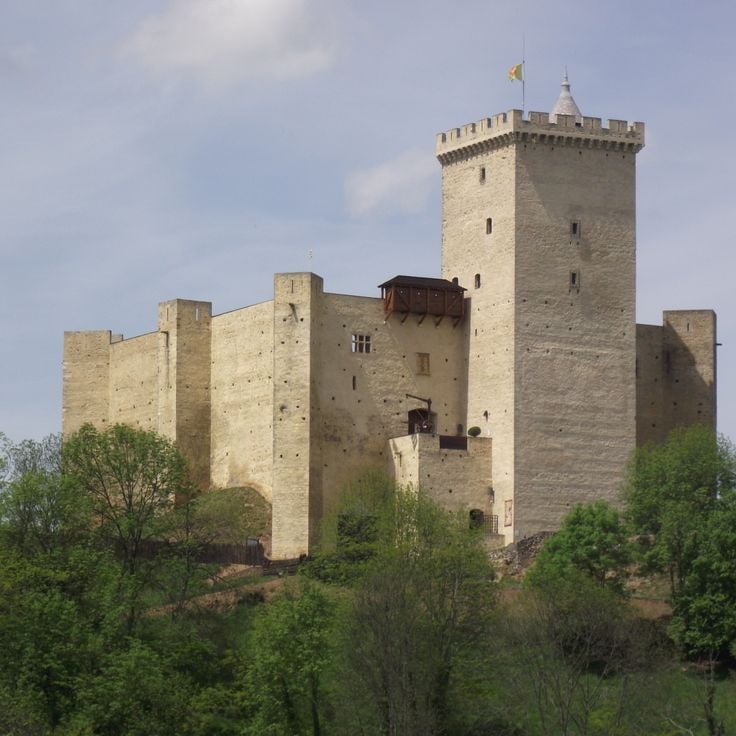
Hautes-Pyrénées, France
The Château de Mauvezin is an eleventh-century fortress standing on a hill at 870 meters altitude. This castle houses a museum displaying medieval military equipment and overlooks the Baronnies region.